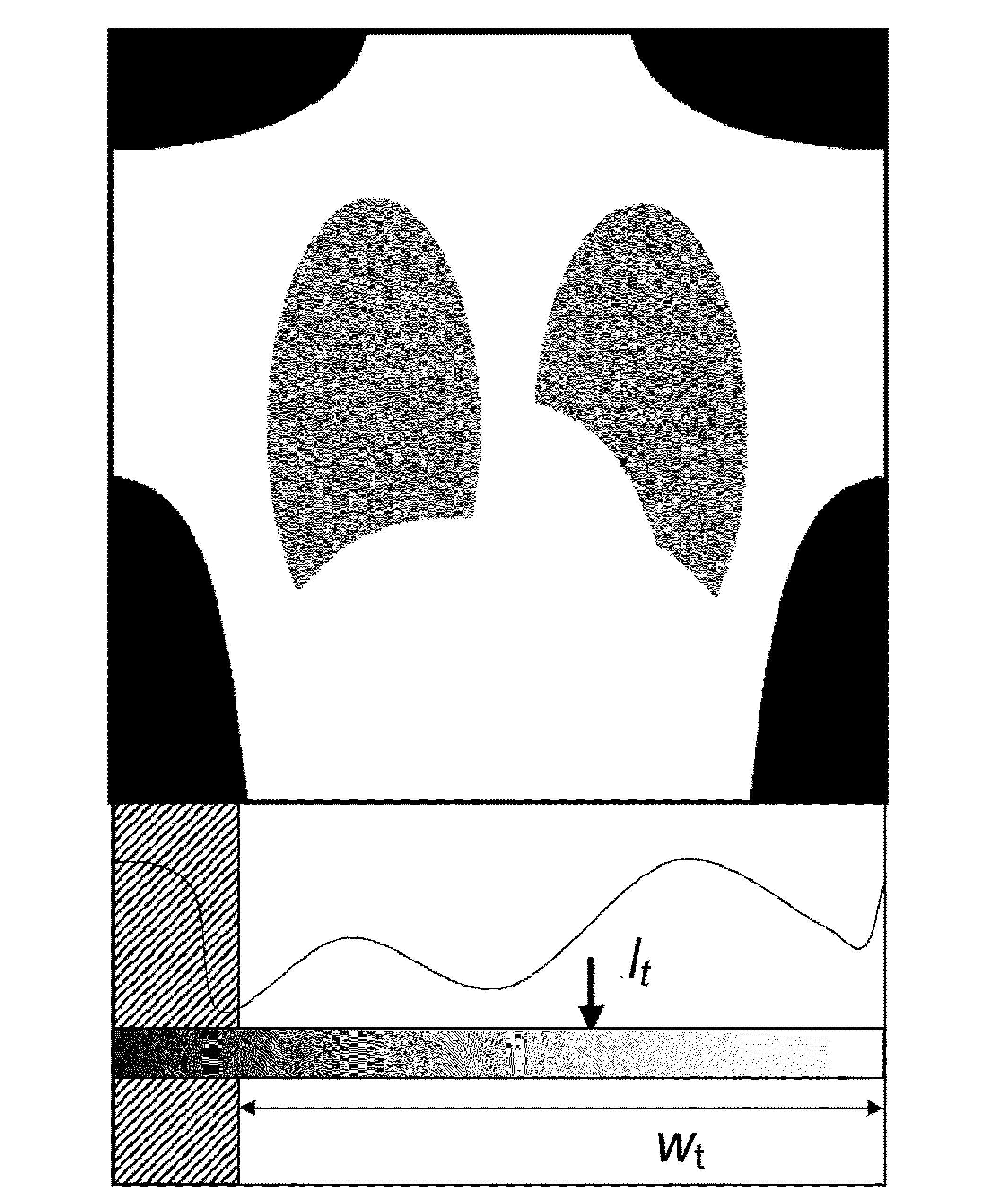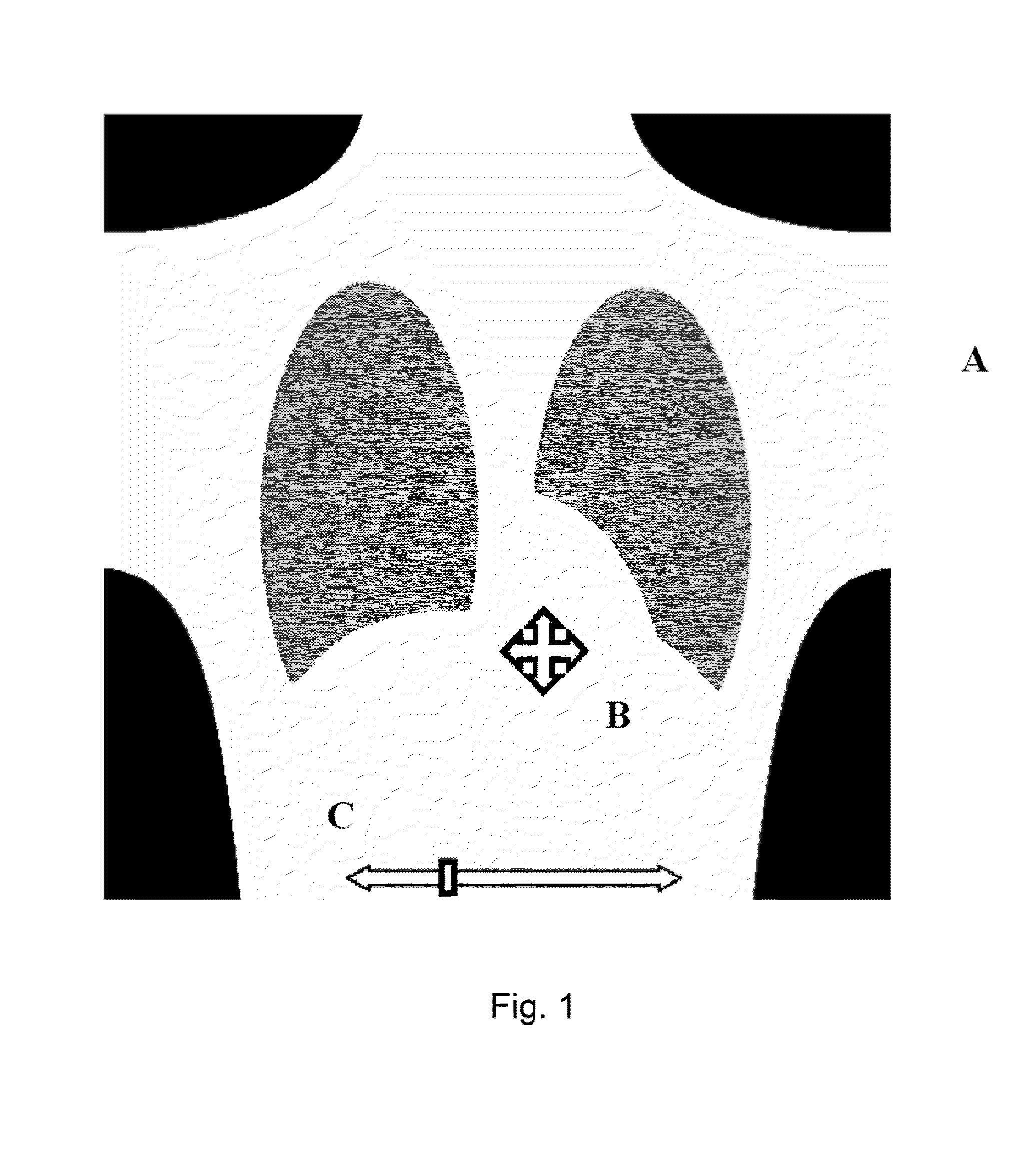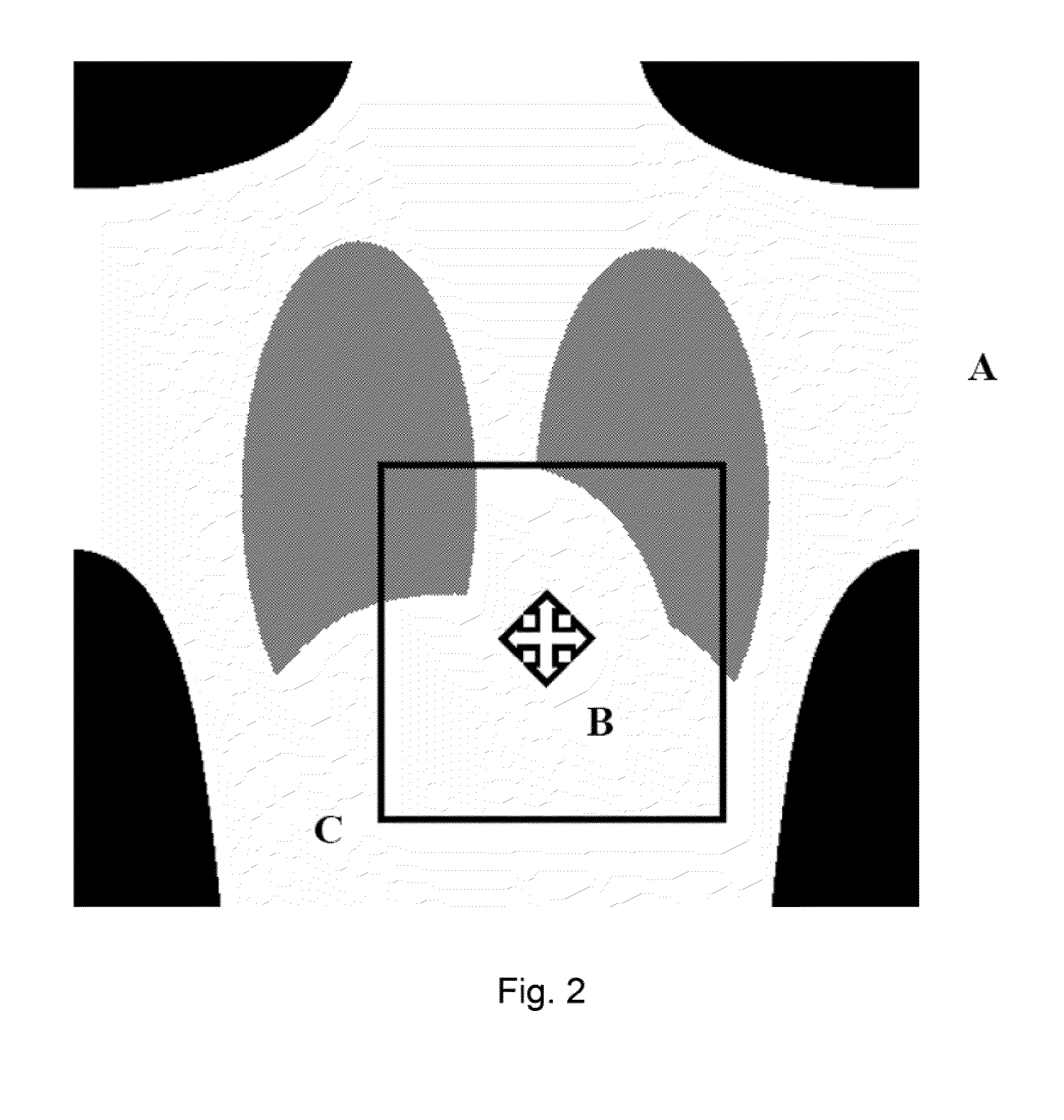Method and System for Changing Image Density and Contrast
a technology of density and contrast, applied in image enhancement, image analysis, instruments, etc., can solve the problems of inability to accurately select a subrange of pixel values to be enhanced, and the dependence between density and contrast adjustmen
- Summary
- Abstract
- Description
- Claims
- Application Information
AI Technical Summary
Benefits of technology
Problems solved by technology
Method used
Image
Examples
second embodiment
[0096]In a second embodiment, the amount of density and contrast adjustment by the first enhancement method and the amount of density and contrast adjustment by the second enhancement method are deduced from the current state of a single indicium.
[0097]Preferably the deviation from the initial position (reference position) of the indicium is used to deduce the relative amounts of adjustments established by both enhancement methods. Small density and contrast adjustments are established by the second enhancement method. The larger the deviation, the more the first enhancement method is used.
[0098]An example of a weighting function establishing this relationship is the tangens hyperbolicus function:
dc=x*dx and dw=(1−x)*dx with x=tan h(c*dx) and c a scaling factor
dg=y*dy and dl=(1−y)*dy with y=tan h(c*dy) and c a scaling factor
[0099]Another possibility is to establish the adjustments by the second enhancement method until a maximum amount of contrast and density change by the second en...
third embodiment
[0100]In a third embodiment, the amount of density and contrast adjustment by the first enhancement method and the amount of density and contrast adjustment by the second enhancement method are deduced from the trajectory of an indicium.
[0101]Preferably the direction of movements of this indicium is used to deduce the relative amounts of adjustments established by both enhancement methods. As long as the user moves the indicium (e.g. the cursor) into the same direction, the amount of adjustment by the first enhancement method is gradually increasing and the amount of adjustment by the second enhancement method is gradually decreasing.
[0102]As the user starts moving the cursor into the opposite directions, the further adjustments are first established by the second enhancement method.
[0103]Moving the cursor into the same direction is defined as a constantly increasing or decreasing of the required density or contrast adjustment dy and dx . Moving the cursor into the opposite directio...
fourth embodiment
[0105]In a fourth embodiment, the amount of density and contrast adjustment by the first enhancement method is computed to approximate a target window width / level setting.
[0106]Referring to FIG. 3, the adjustment vector (dx, dy) resulting from the deviation of the current position of the first indicium from the initial position (wi, / ) at the start of the interactive adjustment session, is decomposed into a first adjustment vector along the direction to a target window width / level setting (wt, i) and a second adjustment vector, preferably orthogonally to the first one, the sum of both adjustment vectors being equal to the adjustment vector (dx, dy). The first adjustment vector specifies the amount of contrast and density change resulting from the first enhancement method (dw, dl) and the second adjustment vector specifies the amount of contrast and density change resulting from the second enhancement method (dc, dg).
[0107]FIG. 4
[0108]Alternatively, referring to FIG. 4, the adjustment...
PUM
 Login to View More
Login to View More Abstract
Description
Claims
Application Information
 Login to View More
Login to View More - R&D
- Intellectual Property
- Life Sciences
- Materials
- Tech Scout
- Unparalleled Data Quality
- Higher Quality Content
- 60% Fewer Hallucinations
Browse by: Latest US Patents, China's latest patents, Technical Efficacy Thesaurus, Application Domain, Technology Topic, Popular Technical Reports.
© 2025 PatSnap. All rights reserved.Legal|Privacy policy|Modern Slavery Act Transparency Statement|Sitemap|About US| Contact US: help@patsnap.com



